In this article, we identify the five top Advantages of Digestate Separation using the Borger Bioselect digestate separation technology, available from manufacturer Börger GmbH
Borken-Weseke, Germany. Scroll down to see the list of the top advantages!
Liquid/ Solid Separators (also known as screw separators) are a widely used separation technique for digestate separation in biogas plants and agriculture; they are a dependable and effective mechanical separation method.
Separation efficiency may be tailored to different feedstocks by altering the screen size, for example. Depending on the feedstock material, a screw press can obtain a dry matter percentage of the separated solid fraction of around 40%.
What is Borger Bioselect Digestate Separation?
With the Borger Bioselect Digestate Separator, separation is achieved using the proven system for digestate pumping, storage, and separation offered by this well-established company.
The Borger Bioselect separator brings to all AD Plant Operators the ability to separate solid fibrous digestate leaving the biogas reactor from the liquid, reliably and cost-effectively.
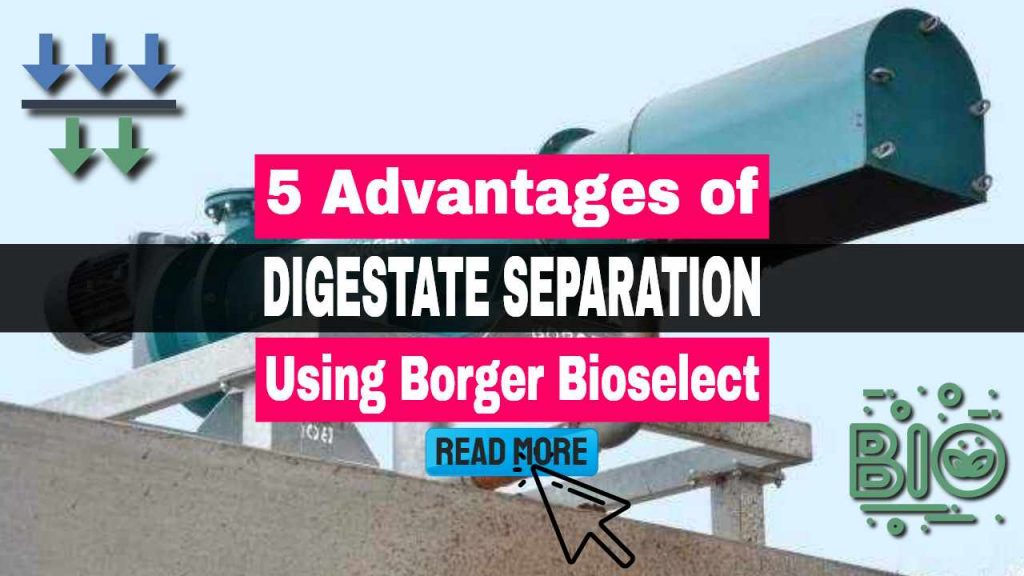
List of 5 Advantages of Digestate Separation Using the Borger Bioselect Digestate Separator
1. Separating the solid fibres, which leave the biogas reactor, from the liquid portion of digestate means that the overall digestate storage capacity needed at the AD plant is reduced during the maturation period.
2. New uses emerge for both liquid and solid digestate. The separated solid is used by some as an energy source, but usually it is left in windrows for a period before being used as a soil improver and spread back onto the land
3. The Solid Phase can be dewatered to an optimum water content for use as bedding for cattle
4. Liquid Phase is most often used as a fast-acting crop fertiliser, and is easier to sell off-farm after separation.
5. The Liquid phase can then be injected into the soil, meaning no possibility of etching damage to the plants.
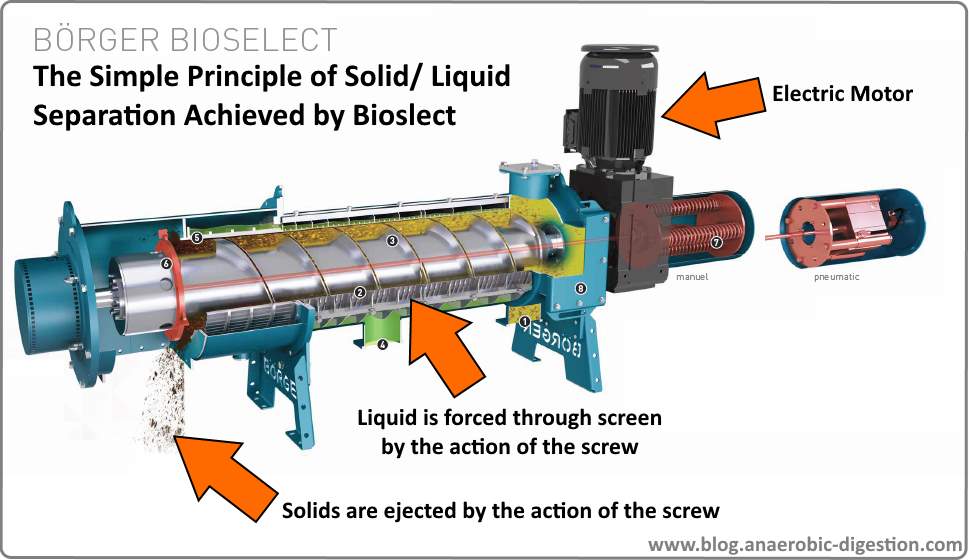
WHY NOT FIND OUT MORE ABOUT THE ‘BORGER BIOSELECT' DIGESTATE SEPARATION SYSTEM?
The Borger Bioselect digestate separator is a purely mechanical device with low maintenance requirements and needs no chemicals to run. Simply switch the system on and start separating!
What Others Are Saying About the Borger Bioselect Digestate Separator – A Web Roundup
The Bioselect BS is a combination of the separation machine and two Rotary Lobe Pumps. These three drive units are joined with a special control unit with various control and safety components.
The separator is load-triggered. The feed pump only conveys the volume which the Bioselect BS is able to process. The high-density solids discharge pump determines the degree of thickness. via Pandct.com
“We had a great response to this new product at last year’s show”, said Borger UK’s Managing Director, David Brown, “so it’s time now to give it centre stage. AD operators and farmers seem to like it for the throughputs (up to 60m3/h) and because it can be very easily integrated into an existing system or used as a mobile separator”.
Combining a separator and two Maintenance-In-Place (MIP) Borger rotary lobe pumps, the Bioselect separator is load-triggered, whilst the feed pump ensures that volumes do not exceed capacity.
The high-density solids-discharge-pump determines the degree of thickness, so the user can (for example) thicken 4 per cent dissolved solids (DS) content liquid into 12 per cent DS to make it suitable for a tanker.
The Börger Bioselect Separator provides efficient separation technology. Using a purely mechanical process, liquid parts are separated from solid parts in the medium (such as digestate or liquid manure).
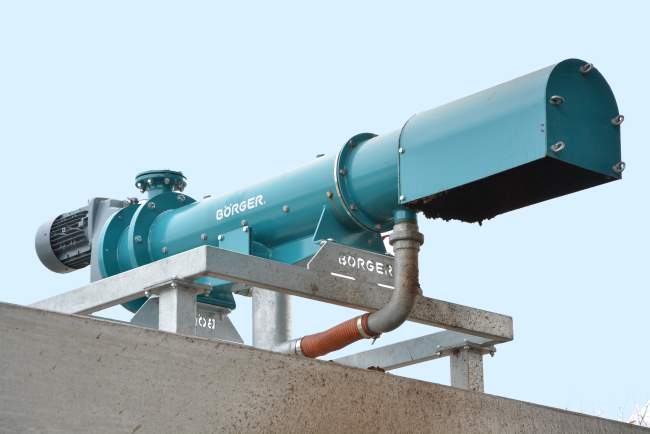
The installation options of the Börger Bioselect are as versatile as their requirements.
Whether attached to:
- a simple wall bracket,
- installed on a movable frame with an upstream macerator or
- as a mobile version with a conveyor belt
The application options of the Bioselect are unique.
Börger UK Limited
East Wing – Old School
Watling Street, Gailey
Staffordshire,
United Kingdom, ST19 5PR
Phone +44 1902 798977
www.boerger.com
[End of Original Article posted in August 2017.]
Background Information
In a recently reported research project, screw presses accounted for 68% of these separators, and 78% of digestates were derived mostly from fibrous inputs such as cow dung and silage.
Except for nitrogen, digestate components were efficiently concentrated in the solid fraction in the high-performance profile. Separators were decanting centrifuges, and the anaerobic digestion inputs were mostly non-fibrous materials, including pig slurry, sludge, and agro-industrial waste.
This study provided a source for assessing digestate separation, opening the door to more realistically forecasting digestate separation performance.
Nitrogen and Potassium in Solid and Liquid Fractions
The digestate, the end product of the biogas plant, is frequently divided into solid and liquid parts, which boosts its potential for further processing and use as a fertiliser.
One of the most essential components in the digested waste, nitrogen and potassium, bind to the separated liquid fraction, making it an excellent fertiliser concentration. Typically, phosphorus attaches to a distinct solid fraction.
Stainless steel is frequently used for the key components, such as the screw press and strainer. Cast iron, stainless steel, or cast stainless steel is used to make the housing. The installed electrical capacity ranges between 3 and 11 kW.
The separation of the discharged digestate slurry into a liquid and a solid fraction provides significant benefits. The residual thin slurry can be disseminated at any moment without the need for complex homogenising processes. The odourless solid portion may be stored without difficulty.
Slurry separation is an excellent option for farms with a large animal population but limited distribution regions.
It decreases storage capacity requirements by up to 30%. Mineral fertilisers can be preserved by making appropriate use of nutrients from the liquid and solid portions.
Profits can be increased by selling the solids to small gardeners, for example, or as a foundation for compost for horticulture farms.
[Updated 2021 and October 2025.]

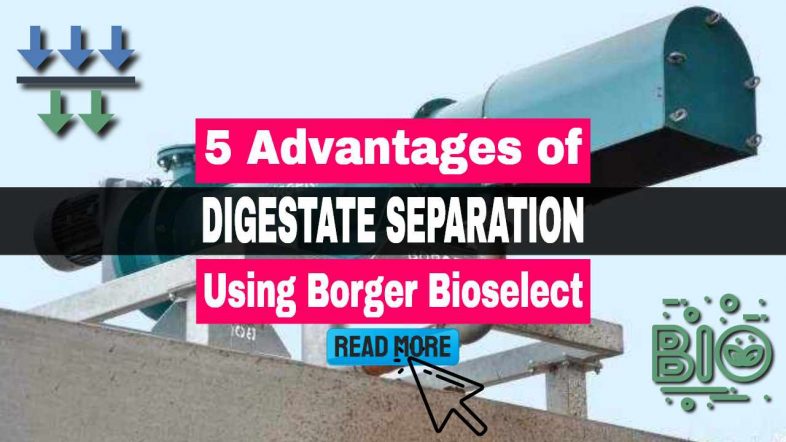
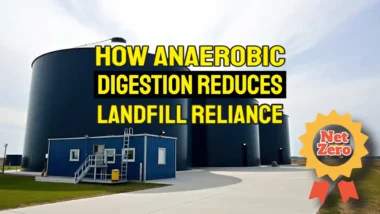
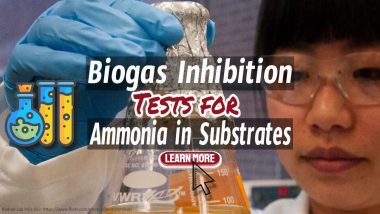

Do you install in UK?
Dear Boeger office company
My Company is J.K.Agrobiz Co.,Ltd. Thailand we are work for response need in Livestock Farm.
They want me to find separator equipment for Biogas slurry, it’s after ferment process.
Sure, in Thailand now have several of same kind of this machine, but in another company. If we can have your product on our product list we can go present to customer by ourselves.
You can recommend me, what machine is suitable for this case and also another machine for livestock farm .
thank you and regards. J.K.
Jarek. For all enquiries contact Boerger Pumps direct. Go to their website at http://www.boerger.com and look for their email form on their contact page (I know they have recently changed their website, and the “Contact” link is now very small, but it is there at the top of the page), look carefully for it and I am sure that you will find it.
The invention of digester separator technology is pivotal to the biogas separation. Tema M Laboratory is focused mostly on the research of the trace elements in terms of biogas process optimization. Researchers are also interested in the optimal use of Swedish paper mill wastes, hydrolysis optimization (i.e. the use of enzymes) and the rheology (crucial role of trace elements) in the anaerobic digestion process. They believe that the optimized trace elements addition might result in higher methane production even by 15-20% (ca. 100 GWh).
NIKOLA TESLA! Here he offers you all the power sources that you could make use of without destroying the setting and also how you can develop them! he composed his book for individuals that care! this was 100 years ago! the cordless power tower sends out a type or radio wave that permits commercial operating of equipment and also gives off no pollution!please i set up a lots of info to reveal that it functions, i additionally show a 20 feet wireless
I use one of these for a food waste/crop fed mix.. They work really well. We do get some leaks but they quickly reseal. Really good pieces of kit.
There is a video which shows how the use the fiber digestate as livestock bedding at https://www.youtube.com/watch?v=-_8JHC2bojg